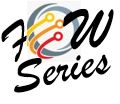 Our Future Technician Preparation topics this year will push deeper into operational and technical skills and knowledge levels that we need your help with. These inquiries are driven by the NSF-ATE funded project (Due 1839567) with its goal to provide insight, approaches and recommendations related to a two-year college technician education program response to new technologies insertion into the work-space.
Our Future Technician Preparation topics this year will push deeper into operational and technical skills and knowledge levels that we need your help with. These inquiries are driven by the NSF-ATE funded project (Due 1839567) with its goal to provide insight, approaches and recommendations related to a two-year college technician education program response to new technologies insertion into the work-space. The project’s New Year’s resolution, to characterize the impact of new technology on the education of the future technician workforce, is framed here by three questions:
(i) What skill and knowledge sets are influenced by new technologies in the technician’s professional space?
(ii) What specific practical techniques should the best technician education pedagogy use?
(iii) What professional development avenues are or should be available for faculty to effectively introduce new technologies into the two-year technician programs?
As a vehicle to put these questions into play, we will correlate inquiries to the following NSF-ATE identified general classifications: advanced manufacturing technologies, agricultural and bio-technologies, energy, environmental technologies, Information technology, security technologies and geospatial technologies. Information that is acquired will be corralled within the three categories (Data Knowledge and Analyses, Business Knowledge and Processes, and Digital Technology) identified by the project’s national Industry Advisory Board and various industry partners around the United States during the first year of this project.
Although they will cycle in and out of the year’s effort and must eventually be blurred together, the discussions of these three topics do not have to be identified with the classic “Who’s on First” Abbot and Costello routine. It is most likely that the implementation of a Professional Development strategy will be tackled last. It is also unlikely that a specific new technology in any of the technician fields supported by NSF-ATE resources will require a learning profile that will deviate drastically from what is experienced today. After its initial engineering impediments have been overcome, new technologies intensive STEM requirement adjustments are dampened by the time technician education becomes a factor in its application. A standalone new course, the easiest learning profile adjustment, will be an overkill. Most likely, various courses in the technician’s portfolio will have content adjustments to accommodate any new knowledge/skill required by the new technology. This information integration process is a delayed starter but the “long-winded” member of the trio of project actions as represented by the three “What” questions above. Thus, our information acquisition action plan is to put our question (ii) on Abbot and Costello’s first base and ask for your thoughts about it first.
“What specific practical techniques should the best technician education pedagogy use?” is our first base question and the trail to the answer starts with you. As the jumping-off point, what teaching/learning techniques are used now? Are “Hands-On” activity protocols primarily instructionally constrained or crafted open-ended challenges? If used, are simulation activities incorporated into the learning cycle as essential or supportive components? Is virtual reality a tool in hands-on learning approaches? Although the “Head talk” approach is seldom used in two-year technician education programs, are the classroom framed lecture-type venues primarily for critical information/content transfer, vehicles for student interactions with the STEM concept, or a blend of both? Are the performance evaluation instruments used as skill acquisition indicators administered as single final or repetitive until success events?
It would be reckless within this Blog series mechanism to even attempt to define “education pedagogy”. The practical approach is to just recognize that answers to the question in the previous paragraph must comfortably connect to an education delivery structure. Even if this living connection is not really an education pedagogy, it is what is needed for the efficient production of new technicians. This requirement leads to a set of inquirers focused on program length, delivery format, and interaction with other education structures. For example, the Engineering Technology two-year program in Florida is 60 credits long, articulated statewide with 23 other state-colleges, allows automatic credit for a national (third party testing) industry credential, and has a pathway to a State University System B.S. Engineering Degree that is also the initial credential for acquiring a Professional Engineer status in Florida. What is happening within technician programs you are involved with or know about?
Returning to our closing theme, "The work to do starts with you." hopefully is now the familiar exit for these monthly Future of Work Series contribution. The series will pick up this education pedagogy question next month. Exploration of how technician education is accomplished across the country and in the European Union will be explored. Your feedback on the topics posed this month is important to this discussion. NSF-ATE is listening and can put its resources into action in response to what it hears. Now is the time and opportunity to speak up. Think about the ideas outlined above. Contact us. Send us your thoughts at gilbert@usf.edu.


No comments :
Post a Comment